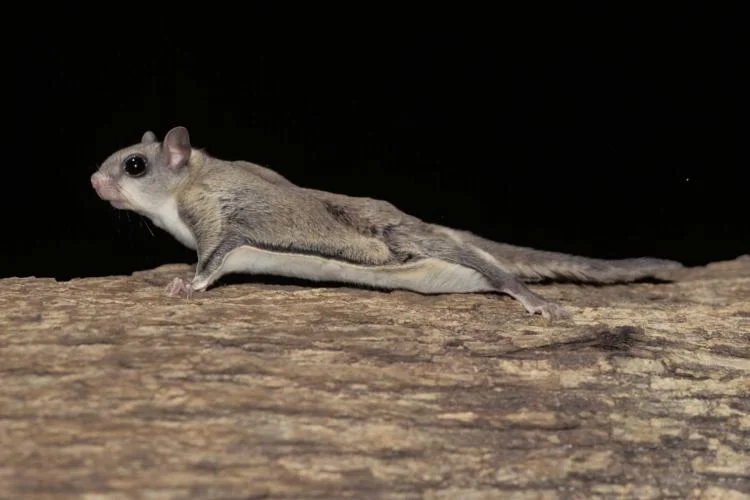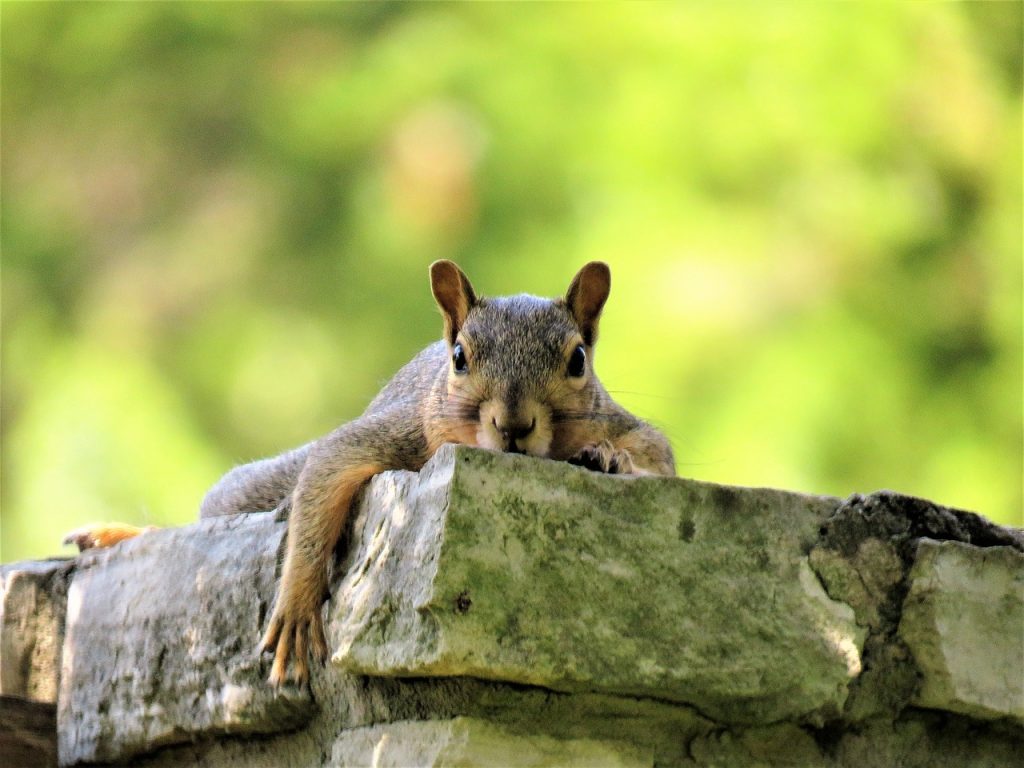Flying squirrels can enter your house through various access points, thanks to their unique gliding ability. They may reach your roof and find openings to your attic, navigate through eaves, vents, and small cracks in your home’s exterior, or even enter through chimneys lacking proper screening. Open windows and doors can also provide entry points.
In addition, to prevent flying squirrels from getting inside, seal openings, install chimney caps, secure windows and doors, trim tree branches near your home, and use deterrents or traps if needed. Contact a wildlife control professional if you need help with removal and prevention, as some flying squirrels may be protected by local wildlife laws.
How do flying squirrels enter houses?

Taking steps to address these common entry points and vulnerabilities can help protect your home from flying squirrel intrusions and minimize the potential for conflicts with these small rodents.
Roof Access
Flying squirrels are agile climbers, and they can scale the exterior walls or nearby trees to reach the roof of your house. Once on the roof, they take advantage of their gliding ability. Their gliding mechanism, known as a patagium, extends from their wrists to their ankles, allowing them to glide through the air for some distance.
This gliding capability enables them to access the roof from trees or other high vantage points in your vicinity.
Identification of vulnerable areas on the roof
Vulnerable areas on the roof include loose or damaged roofing materials, gaps around roof vents, and openings in soffits and fascia. Flying squirrels may also exploit areas where tree branches come into close contact with the roof, giving them easy access.
Therefore, it’s essential to regularly inspect your roof for any signs of wear and tear and promptly address any issues to prevent these rodents from gaining entry.
Eaves and Vents
Explanation of how flying squirrels enter through eaves and vents:
Flying squirrels are drawn to eaves and vents because they often provide shelter, warmth, and protection from predators. They can squeeze through small openings and crevices in eaves or vents, making their way into your attic or the interior of your home.
In addition, they are skilled at navigating through tight spaces, and once inside, they may establish nests and seek out food sources.
Discussion of their attraction to these areas
Eaves and vents are attractive to flying squirrels because they mimic the natural hollows and cavities they seek in tree hollows. These areas offer them a safe and secure place to live and reproduce. To prevent them from entering, you should consider installing protective screens or repairing any damaged eaves, vents, or soffits.
Cracks and Gaps
Flying squirrels, like other rodents, are adept at exploiting small openings and gaps in your home’s exterior. They can chew and gnaw at these openings to make them larger if needed. These openings can be found around pipes, utility entrances, and gaps in siding or roofing materials.
Even a tiny gap can provide access for these small and agile creatures.
Identification of common vulnerable spots
Common vulnerable spots for flying squirrel entry through cracks and gaps include gaps in the roofline, holes around plumbing and utility lines, and poorly sealed exterior vents. To prevent their intrusion, thorough sealing and repair work should be carried out.
Regular maintenance and inspection are crucial to identify and address these vulnerabilities.
Chimneys
Flying squirrels can enter your house through chimneys if the chimney lacks a proper screen or cap. They climb down the chimney from the top or may simply drop into the fireplace or hearth, allowing them to access your home’s interior.
Chimney caps or screens are crucial for preventing not only flying squirrels but also birds, other animals, and debris from entering your chimney. They help maintain the safety and integrity of your chimney, fireplace, and home, making it essential to ensure your chimney is appropriately protected to avoid unwanted wildlife intrusion.
Open Windows or Doors
Flying squirrels are nocturnal animals, which means they are most active at night. During this time, if windows or doors are left open, they may inadvertently enter your home while you’re sleeping or unaware.
To prevent flying squirrels from entering your home through open windows or doors, it’s essential to be vigilant, especially during the night. Make sure to close and secure all potential entry points before nightfall to reduce the risk of them finding their way inside.
What are the key prevention measures for flying squirrel intrusions?
Protecting your home from flying squirrel intrusions begins with understanding their habits and implementing targeted prevention measures.
Sealing Openings
The importance of inspecting your home’s exterior: Regular inspections of your home’s exterior are essential for identifying potential entry points for flying squirrels and other pests.
Inspections can reveal vulnerable areas, gaps, cracks, and damaged materials that require attention. This proactive approach allows you to address problems before they become entry points for wildlife.
Steps to seal potential entry points
To seal potential entry points, follow these steps:
- Identify gaps, holes, or cracks in your home’s exterior.
- Use appropriate materials, such as caulk, weatherstripping, or hardware cloth, to seal these openings.
- Pay special attention to eaves, vents, soffits, and any damaged areas of your roof.
- Ensure that all entry points are tightly sealed to prevent access for flying squirrels.
Installing Chimney Caps
Chimney caps play a vital role in preventing not only flying squirrels but also birds, raccoons, and other animals from entering your home through the chimney. These caps are designed to allow smoke and gasses to escape while keeping animals and debris out. They are typically made of metal and include mesh screening to deter wildlife intrusion.
Ensuring proper screening for chimneys
When installing chimney caps, it’s crucial to ensure they have adequate screening that prevents even the smallest pests like flying squirrels from getting through.
Moreover, regular maintenance of the chimney cap is also essential to make sure it remains effective and free from damage or blockages.
Securing Windows and Doors
The significance of keeping them closed: Flying squirrels are more likely to enter through open windows or doors, especially at night when they are active. Keeping windows and doors closed when not in use is an effective way to prevent these rodents from accessing your home.
Special attention to nighttime precautions: In regions where flying squirrels are prevalent, it’s important to pay special attention to nighttime precautions. Ensure that all potential entry points are secured before nightfall.
This includes checking that windows and doors are tightly closed, and that screens and weatherstripping are in good condition to prevent any accidental intrusions.
Tree and Branch Maintenance

Trimming branches near the house: Flying squirrels often use overhanging branches as launching points to access your roof and other entry points. To reduce accessibility to your home, regularly trim branches that are close to or in contact with your house. This can make it more challenging for flying squirrels to reach your roof or eaves.
Reducing accessibility to the roof: In addition to trimming branches, consider removing any objects or structures near your home that might offer flying squirrels an elevated path to your roof. By eliminating these access points, you can further secure your home against potential intruders.
Using Deterrents or Traps
Considerations for employing these methods: Deterrents, such as motion-activated lights, sound devices, or taste-aversion products, can help discourage flying squirrels from approaching your home.
Humane traps are an option for catching and relocating these animals. However, always consider the local regulations and ethical considerations associated with trapping and releasing wildlife.
Importance of humane and legal handling
When using traps, it’s crucial to handle flying squirrels humanely and in compliance with local wildlife laws. If you choose to use traps, release them far from your home to prevent their return. Seek guidance from wildlife control professionals to ensure proper handling and adherence to legal requirements.
FAQ’s
What times are flying squirrels most active?
Flying squirrels are most active during the night, making them nocturnal creatures.
How rare is it to see a flying squirrel?
Seeing a flying squirrel is relatively rare since they are primarily active at night, and their small size and nocturnal habits keep them hidden from human view.
Do flying squirrels glow at night?
No, flying squirrels do not glow at night naturally. They do not possess bioluminescence or produce light.
Why do flying squirrels glow?
Flying squirrels do not glow; this is a misconception. They have large eyes that help them see in low light, but they do not emit light.
How do you catch a flying squirrel?
Catching a flying squirrel should be done humanely and legally. It’s advisable to consult with wildlife experts or use live traps and release them far from your home.
Can you touch a flying squirrel?
While it’s not recommended to handle wildlife, if you find a flying squirrel in need of assistance, it’s best to contact a local wildlife rehabilitation expert or professional who can handle them safely and properly.
Final Words
It’s essential to understand how flying squirrels can find their way into your home through various entry points. They can access your roof, eaves, vents, gaps, chimneys, or open windows and doors. To prevent these furry intruders, you should inspect and seal potential openings, install chimney caps, keep windows and doors closed, maintain your trees and branches, and consider deterrents or traps.
Taking these steps will help keep your home squirrel-free and secure, ensuring a peaceful coexistence with the wildlife in your neighborhood.
